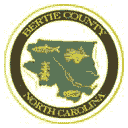2023 Corn Planting Guidance | March 31 Through April 4
go.ncsu.edu/readext?927440
en Español / em Português
El inglés es el idioma de control de esta página. En la medida en que haya algún conflicto entre la traducción al inglés y la traducción, el inglés prevalece.
Al hacer clic en el enlace de traducción se activa un servicio de traducción gratuito para convertir la página al español. Al igual que con cualquier traducción por Internet, la conversión no es sensible al contexto y puede que no traduzca el texto en su significado original. NC State Extension no garantiza la exactitud del texto traducido. Por favor, tenga en cuenta que algunas aplicaciones y/o servicios pueden no funcionar como se espera cuando se traducen.
Português
Inglês é o idioma de controle desta página. Na medida que haja algum conflito entre o texto original em Inglês e a tradução, o Inglês prevalece.
Ao clicar no link de tradução, um serviço gratuito de tradução será ativado para converter a página para o Português. Como em qualquer tradução pela internet, a conversão não é sensivel ao contexto e pode não ocorrer a tradução para o significado orginal. O serviço de Extensão da Carolina do Norte (NC State Extension) não garante a exatidão do texto traduzido. Por favor, observe que algumas funções ou serviços podem não funcionar como esperado após a tradução.
English
English is the controlling language of this page. To the extent there is any conflict between the English text and the translation, English controls.
Clicking on the translation link activates a free translation service to convert the page to Spanish. As with any Internet translation, the conversion is not context-sensitive and may not translate the text to its original meaning. NC State Extension does not guarantee the accuracy of the translated text. Please note that some applications and/or services may not function as expected when translated.
Collapse ▲Some people say that “you shouldn’t start something new on Friday that you can’t finish”. There may be some truth to that old saying and if you’re thinking about planting some corn over the weekend have a look at the document below which outlines corn planting guidance for the areas around Bertie County including Askewville, Colerain, Lewiston-Woodville, Merry Hill, Powellsville, Republican, Roxobel, and Windsor.
Bertie Corn Planting Guidance (March 31 through April 4)
When Dr. Ron Heiniger was making his tour around the state this winter for corn production meetings he stressed successful seed germination and the value of uniform stand establishment. He mentioned the benefits of accumulating 40 to 50 growing degree units (GDUs) in the 4 days following planting. As a reminder corn GDUs are calculated using the following formula:
GDUs =
[(Daily Maximum Temperature ºF + Daily Minimum Temperature ºF) ÷ 2] – 50
Keep in mind that you use a value of 86 ºF for any daily high temperature above 86 ºF. Likewise, for any minimum daily temperature below 50 ºF, you should use 50 ºF in the above equation.
Dr. Heiniger also reminded us that if your forecast is for more than 2 inches of precipitation in the first week following planting you may be hurting your germination and stand establishment.
Before heading to the field with the planter please check the upcoming weather forecast for your area. Ask yourself the following questions:
- Do I have the proper GDU accumulation for successful corn seed germination?
- How much precipitation is forecasted in the first 7 days after planting?
- Are you running pop-up or starter fertilizer on your planter? If so maybe you can have successful germination with the lesser recommended amount of GDU accumulation.
- What is your current soil temperature? If your soil temperature is below 50 ºF then you might not be doing yourself any favors by letting the planter hit the field right now.
If you want to get a report for a particular field or any area in North Carolina check out the link below for the NC Climate Office which will take you to the tool used to generate reports for your area. Enter your location in the first section and then click “Search”. Input your intended planting date in the second section. Under the third section select any years you’d like to compare the current year to and then click “Update”.
Online Tool: NC Climate Office Corn Planting Considerations (GDU Forecast)
Lastly, as a reminder, forecasts change so I recommend that you go to the online tool for updated forecasts and planting guidance. If you have questions please reach out to us at theN.C. Cooperative Extension, Bertie County Center at (252)794-5317.




